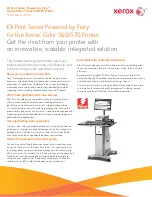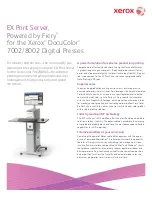
b. Verify that the
scsi-initiator-id
for each host adapter on the second node is set to
7
.
Use the
show-disks
command to find the paths to the host adapters that are connected to
these enclosures. Select each host adapter's device tree node, and display the node's
properties to confirm that the
scsi-initiator-id
for each host adapter is set to
7
.
{0} ok
cd /pci@6,4000/pci@3/scsi@5
{0} ok
.properties
scsi-initiator-id
00000007
...
Install the Solaris Operating System, then apply any required Solaris patches.
For the most current list of patches, see
Read the following two conditions carefully to determine whether you must reboot the nodes.
■
If you are using a version of RAID Manager later than 6.22, proceed to
■
If you are using a version of the Solaris Operating System earlier than Solaris 8 Update 4,
proceed to
■
If you are using RAID Manager 6.22
and
the Solaris 8 Update 4 or later operating
environment, reboot both nodes.
#
reboot
Install the RAID Manager software.
For the procedure about how to install the RAID Manager software, see the
Sun StorEdge RAID
Manager User’s Guide
.
For the required version of the RAID Manager software that Oracle Solaris Cluster software
supports, see
“Restrictions and Requirements” on page 11
Install patches for the controller modules and RAID Manager software.
For the most current list of patches, see
Check the NVSRAM file revision for the storage arrays. If necessary, install the most recent
revision.
For the NVSRAM file revision number, boot level, and procedure about how to upgrade the
NVSRAM file, see the
Sun StorEdge RAID Manager Release Notes
.
Check the controller module firmware revision for the storage arrays. If necessary, install the
most recent revision.
For the firmware revision number and boot level, see the
Sun StorEdge RAID Manager Release
Notes
. For the procedure about how to upgrade the firmware, see the
Sun StorEdge RAID
Manager User’s Guide
.
5
6
7
8
9
10
Installing Storage Arrays
Chapter 1 • Installing and Maintaining a SCSI RAID Storage Device
15
















































